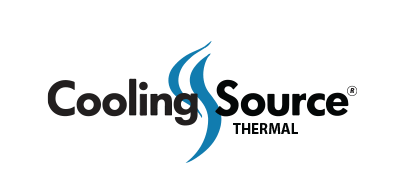Telecom
Cooling Source specializes in applications such as Routers, Switches, Radio and Microwave Transmitters, and Digital Broadcast.
Fully equipped lab
Of course, Cooling Source has state-of-the-art tools and machines for creating and designing the best Thermal Design solutions; we have a fully equipped lab at your disposition. For examples:
Airflow bench test, Temperatures distributions measurements, Data acquisition equipment, Cold Plates leak test, and Pressure test.
Inspection
Cooling Source inspects all incoming materials before production begins. Our engineers create manufacturing drawings for every operation. We consistently conduct strict inspections on all the manufacturing processes. Therefore, it ensures we maintain acceptable part quality. Once the parts are complete, our Quality control engineers will conduct a 100% inspection using various high precision equipment and document the results.
Quality Control
Cooling Source will meet or exceed all Customers and other applicable requirements. Clearly, we will strive to exceed customer expectations, therefore engaging and challenging our talented personnel to continually improve each process and system.
Top management shall ensure the quality policy:
- Is appropriate to the purpose of CSI
- Includes a commitment to comply with requirements and continually improve the effectiveness of the quality management system
- Provides a framework for establishing and reviewing quality objectives.
- Clear communication within the company.
- We continuously review suitability.
Engineering Support
Briefly, as part of design work, our engineers apply advanced 3D modeling. Also, we are using cutting-edge CFD tools to optimize your heat transfer project. In addition, we provide our customers a complete cooling solution to meet specific requirements in a timely and cost-effective manner.
Also, you can count on our Mechanical Engineers to assist with design change and reduce manufacturing costs.
Our fully equipped lab is available to valid your designs, testing, and inspect.
CSI team can help you meet tight schedule requirements while allowing you to focus on your business’s core competencies.
Heatsinks are extensively used in the telecommunications industry to manage heat dissipation in a wide range of electronic equipment and systems. Telecommunication networks rely on high-performance electronic components that generate heat during operation. Efficient heat management is crucial to maintain the functionality, reliability, and longevity of these components. Here are some key applications of heatsinks in the telecom industry:
- Telecommunication Infrastructure: Heatsinks are utilized in various components of telecommunication infrastructure, including base stations, routers, switches, and servers. These components handle large amounts of data traffic and often operate in enclosed spaces, leading to heat buildup. Heatsinks are integrated into these devices to dissipate heat, preventing overheating and ensuring optimal performance and reliability.
- Data Centers: Data centers are critical for housing and processing vast amounts of data in the telecommunications industry. They contain racks of servers, storage systems, and networking equipment, which generate significant heat due to high power consumption. Heatsinks are employed to manage heat dissipation in server CPUs, GPUs, memory modules, and other heat-generating components. They are often combined with advanced cooling systems, such as liquid cooling or airflow management, to maintain optimal operating temperatures.
- Telecommunication Cabinets: Telecommunication cabinets house various electronic components and equipment, such as power supplies, amplifiers, and network interfaces. These components can generate heat during operation, and heatsinks are used to dissipate the heat and prevent thermal issues. Heatsinks in cabinets are designed to optimize airflow and enhance heat transfer, ensuring reliable operation and extending the lifespan of the components.
- Optical Networking: In optical networking systems, such as fiber optic transceivers and line cards, heatsinks are employed to manage heat dissipation in laser diodes, optical modulators, and other optical components. These components can generate heat during data transmission. Heatsinks are integrated into the modules to dissipate the heat and maintain stable optical performance.
- Wireless Communication Equipment: Heatsinks are also utilized in wireless communication equipment, such as antennas, microwave radios, and cellular base stations. These devices often contain power amplifiers and other high-power components that generate heat. Heatsinks are incorporated into these devices to manage heat dissipation, prevent overheating, and maintain reliable wireless communication.
In summary, heatsinks play a crucial role in the telecommunications industry by managing heat dissipation in a wide range of electronic equipment and systems. They contribute to the performance, reliability, and longevity of telecommunication infrastructure, data centers, cabinets, optical networking systems, and wireless communication equipment. By effectively dissipating heat, heatsinks help ensure uninterrupted and efficient telecommunications services.
Also, we stand by, ready to support you from concept to production globally.
We ensure secure facilities, traceability, and document control.
Call or e-mail us today to see what your options are. We feel confident that you will love our products, competitiveness, engineering support, and customer service during the sale and afterward



